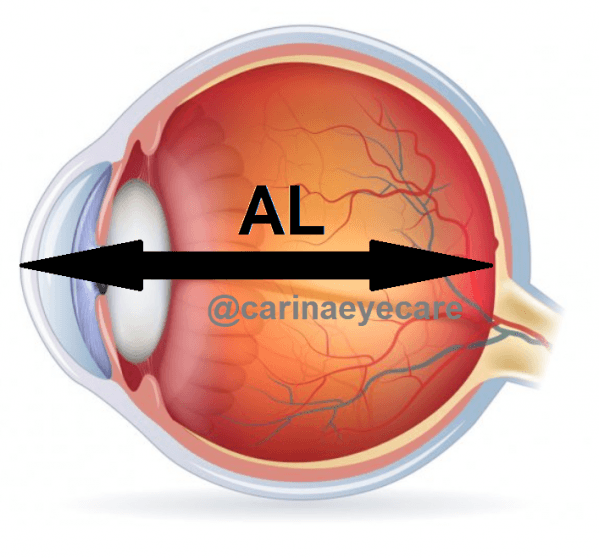Ocular Biometry - Axial Length
Axial Length (AL) refers to the distance from the corneal surface (front of the eye) to retina (back of the eyeball that detects light and sends the information to our brain). This is important because myopia is when the eyeball has grown too long, and poses significant risks to our eyes for risk of irreversible vision loss.

My own equipment for measuring axial length.
As an optometrist with a keen interest in myopia management, I've been measuring the axial length of my myopic patients for years now. While practising at other optometry practices, I would refer patients to the Centre for Eye Health at UNSW as they had the appropriate equipment, or utilise a local ophthalmology clinic to take my own measurements to monitor my patients with the utmost care. However, now that I have my own practice I have chosen to invest in my own piece of equipment that enables me to measure within seconds the axial length of my patients' eyes.
Why measure axial length?
Did you know that myopia occurs when the eye grows too long? Normally, this equipment is only part of an eye specialist's arsenal of tools to detect and monitor eye disease. As an optometrist with a passion for myopia, it is very important to me to know the axial length of my patients eyes so that I can measure precise changes in the length of the eyeball from front to retina. This measurement is taken into account along with the refraction (spectacle prescription), age, vision, and retinal health of a myopic patient in order to assess efficacy of myopia management, and guide treatment going forward.
What risk does an increase in axial length mean for me or my child?
As the eye grows longer, the retina becomes stretched and weakened. On average, a human eyeball should be about 23.3mm long. However, myopic patients may have eyeballs that are 26mm or longer, which places the eyes are a much greater lifelong risk of developing eye diseases such as retinal detachment, glaucoma, retinal tears, and myopia macular degeneration.
Measuring axial length:
1. Determines the risk of associated disease for an individual patient
2. Predicts the risk for myopia development for an individual patient
3. Evaluates the effectiveness of myopia management treatments
2. Predicts the risk for myopia development for an individual patient
3. Evaluates the effectiveness of myopia management treatments
How often should me or my child have our axial length reviewed?
The minimum review period for axial length measurements:
- Children with rapidly progressing myopia is 3 monthly
- At risk young children with parental myopia is 6 monthly
- Children with slow or stable myopia is 6 monthly
- All myopia management patients is annually
How long does an axial length measurement take?
The measurement is done at Carina Eye Care using a Nidek AL-Scan machine. You simply look at the red light, I focus the machine, the machine makes a few noises, and the axial length measurement is taken within seconds for each eye.
